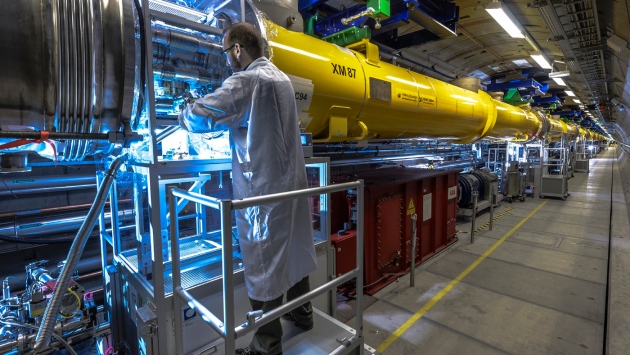
- Details
- Tuesday, 12 September 2017

Scientists who make movies of molecules in motion have a new high-speed camera to shoot with. The €1.2-billion (US$1.4-billion) European X-ray Free Electron Laser (XFEL) will start running its first experiments in September near Hamburg, Germany. The European XFEL fires powerful X-rays in bursts of a few hundred femtoseconds: so short that, like strobe lights, they can capture snapshots of jittery molecules frozen in time, and with a wavelength small enough to provide pictures at atomic resolution.
The Hamburg machine is one of a few such X-ray lasers worldwide, but boasts a unique rapid-fire feature: it can rattle off 27,000 pulses every second, a firing rate more than 200 times greater than the next-fastest facility, the $420-million Linac Coherent Light Source (LCLS) at the SLAC National Accelerator Laboratory in Menlo Park, California. “It’s such a different beast to anything else on the planet that it really feels like going into uncharted territory,” says Arwen Pearson, a biochemist at the Centre for Free-Electron Laser Science in Hamburg.
In a single second, scientists should be able to collect more than 3,000 good-quality X-ray pictures, compared with 100 or so at other facilities, says Adrian Mancuso, a project scientist at the European XFEL’s experimental stations in Schenefeld, near Hamburg. “Having lots of data matters, and the European XFEL will deliver it in truckloads,” says Abbas Ourmazd, a physicist at the University of Wisconsin–Milwaukee. The European machine — paid for by 12 countries — should relieve some of the pressure on older XFELs in the United States and Japan (see ‘X-ray laser guns’), which are heavily oversubscribed by scientists keen to capture atomic-scale images of their samples. Another XFEL opened to users in Pohang, South Korea, in June, and a machine in Villigen, Switzerland, is due to start experiments in 2018.
